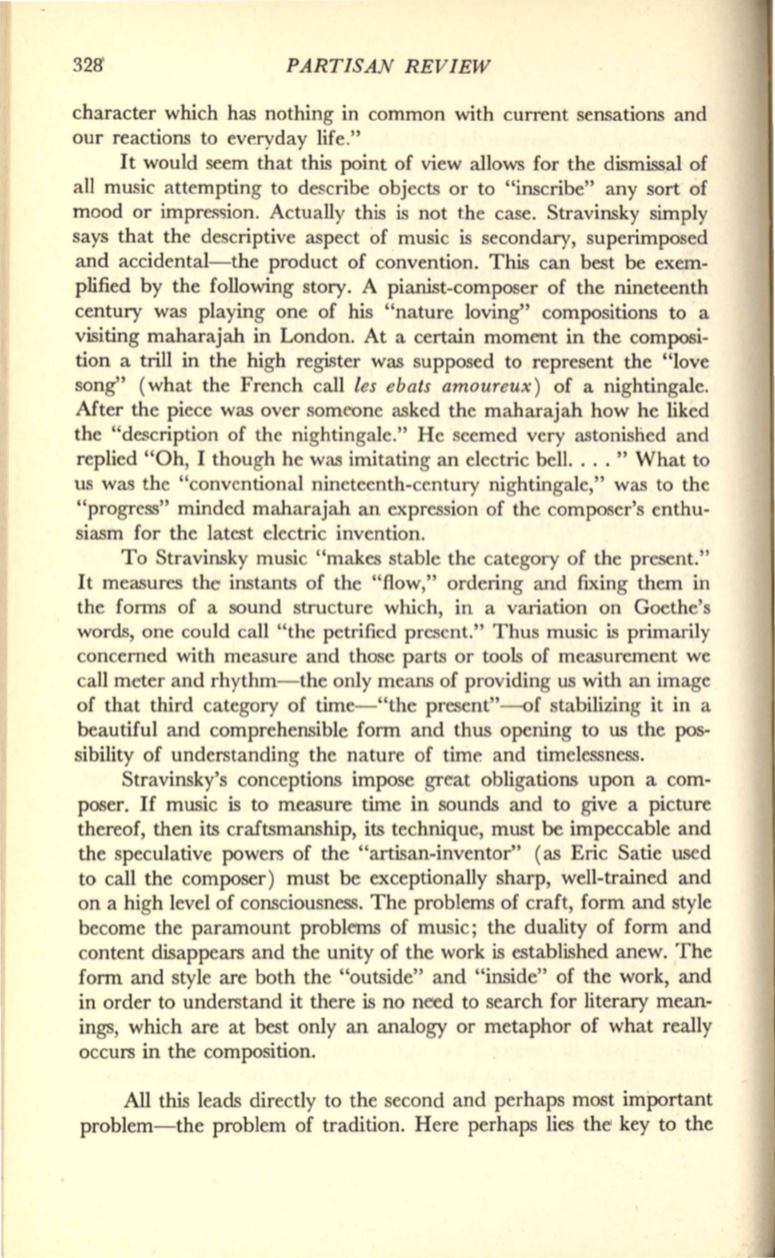
328'
PARTISAN REVIEW
character which has nothing in common with current sensations and
our reactions to everyday life."
It would seem that this point of view allows for the dismissal of
all music attempting to describe objects or to "inscribe" any sort of
mood or impression. Actually this is not the case. Stravinsky simply
says that the descriptive aspect of music is secondary, superimposed
and accidental-the product of convention. This can best be exem–
plified by the following story. A pianist-composer of the nineteenth
century was playing one of his "nature loving" compositions to a
visiting maharajah in London. At a certain moment in the composi–
tion a trill in the high register was supposed to represent the "love
song" (what the French call
les ebats amoureux)
of a nightingale.
After the piece was over some'One asked the maharajah how he liked
the "description of the nightingale." He seemed very astonished and
replied "Oh, I though he was imitating an electric bell. ... " What to
us was the "conventional nineteenth-century nightingale," was to the
"progress" minded maharajah an expression of the composer's enthu–
siasm for the latest electric invention.
To Stravinsky music "makes stable the category of the present."
It measures the instants of the "flow," ordering and fixing them in
the forms of a sound structure which, in a variation on Goethe's
words, one could call "the petrified present." Thus music is primarily
concerned with measure and those parts or tools of measurement we
call meter and rhythm-the only means of providing us with an image
of that third category of time-"the present"--of stabilizing it in a
beautiful and comprehensible form and thus opening to us the pos–
sibility of understanding the nature of time and timelessness.
Stravinsky's conceptions impose great obligations upon a com–
poser.
If
music is to measure time in sounds and to give a picture
thereof, then its craftsmanship, its technique, must
be
impeccable and
the speculative powers of the "artisan-inventor" (as Eric Satie used
to call the composer) must be exceptionally sharp, well-trained and
on a high level of consciousness. The problems of craft, form and style
become the paramount problems of music; the duality of form and
content disappears and the unity of the work is established anew. The
form and style are both the "outside" and "inside" of the work, and
in order to understand it there is no need to search for literary mean–
ings, which are at best only an analogy or metaphor of what really
occurs in the composition.
All this leads directly to the second and perhaps most important
problem-the problem of tradition. Here perhaps lies the' key to the


